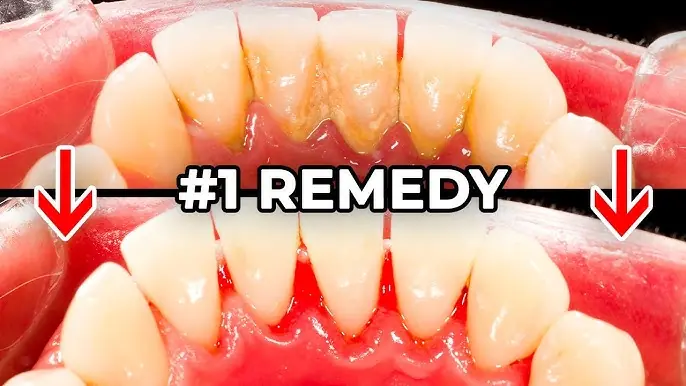
5 Warning Signs of Fish Preserved with Urea – Don’t Take It Home Even If It’s Free
Fish is one of the most nutritious foods, rich in protein, omega-3 fatty acids, and essential minerals that promote heart and brain health. However, in the pursuit of higher profits, some vendors have resorted to using urea—a harmful industrial chemical—to make fish appear fresher for longer periods, deceiving consumers and posing serious health risks (VNExpress, 2024).
According to the World Health Organization (WHO), urea is a nitrogen-based compound commonly used in fertilizers and certain industrial applications, not approved for food preservation. When ingested, it can convert into toxic ammonia, which damages the liver, kidneys, and nervous system (WHO Food Safety Report, 2023).
Here are five clear warning signs that fish may have been soaked or preserved in urea. Even if it’s cheap—or free—avoid bringing it home.
1. An unusually sharp, pungent, or ammonia-like smell
Fresh fish naturally has a light ocean scent or mild freshwater aroma that’s not offensive. Fish soaked in urea, however, emits a strong, acrid, or chemical smell, sometimes resembling urine. This happens because urea breaks down into ammonia, a compound responsible for that sharp odor. If you detect this near the fish’s gills or belly, it’s a major red flag that the fish has been chemically treated (Tuổi Trẻ, 2024).
2. Shiny, overly smooth skin that feels sticky and cold
Fresh fish skin should be moist but slightly rough to the touch. Fish treated with urea often looks artificially glossy, as if coated in oil, and feels unnaturally cold or slippery. The chemical slows down bacterial decomposition and tightens the outer tissue, giving the illusion of freshness. But beneath the surface, the fish’s internal tissues may already be breaking down (Healthline, 2023).
3. Cloudy eyes with a milky film or swelling
The eyes are one of the easiest indicators of freshness. A healthy fish has clear, slightly bulging eyes with distinct pupils. In contrast, urea-soaked fish show white or cloudy films over the eyes, sometimes with swelling or sticky mucus. This occurs because urea alters protein structures in the cells, making them swell and lose their natural transparency (VietnamPlus, 2024).
4. Darkened or dried gills that smell foul
Inspect the gills carefully—they are the “lungs” of the fish and reveal its true condition.
-
Fresh fish: bright red or pinkish gills, slightly moist, with a mild ocean scent.
-
Urea-treated fish: gills appear deep red, brownish, or even black, sometimes dry or sticky, and emit a sour or ammonia-like odor.
Unscrupulous sellers might rinse gills with cold water to mask the color, but when you lift the gill cover, the foul smell becomes obvious (VNExpress, 2024).
5. Soft, mushy flesh with a gray or pale hue
A simple press test can expose spoiled or chemically treated fish. Fresh fish flesh is firm and springs back quickly after pressing. Urea-treated fish, on the other hand, becomes soft, discolored, and loses elasticity. When cut open, the belly may release yellowish or cloudy liquid with a strong odor. This is a telltale sign of protein breakdown caused by chemical soaking.
Health hazards of eating fish preserved with urea
Medical experts warn that urea has no safe threshold for human consumption. Short-term effects include nausea, vomiting, diarrhea, and dizziness. Prolonged exposure can lead to liver and kidney damage, disrupt metabolic functions, and even increase the risk of stomach and liver cancers (WHO, 2023; Healthline, 2023).
Children, pregnant women, and the elderly are especially vulnerable due to weaker detoxification systems. The Vietnam Food Administration has repeatedly advised consumers to avoid fish that appears overly fresh or emits a chemical odor, as these are common signs of illegal preservation (VietnamPlus, 2024).
How to choose safe, fresh fish
To protect yourself and your family:
-
Buy fish only from trusted markets or certified seafood suppliers.
-
Look for fish with bright red gills, clear eyes, and firm flesh.
-
Avoid fish that looks too shiny, smells like ammonia, or feels stiff and rubbery.
-
When in doubt, rinse the fish in diluted salt water for 10–15 minutes—this may help remove surface chemicals, though it cannot neutralize internal toxins.
Bottom line:
Fish is an excellent source of nutrition only when it’s clean and naturally fresh. No discount or free offer is worth risking your health. By learning these five warning signs, you can easily avoid urea-soaked seafood—the hidden “toxic trap” disguised as fresh fish.
News in the same category


K Hospital Issues Warning: Daily Consumption of Processed Meats May Increase Cancer Risk – Don’t Ignore It!

Eating Chicken with Sticky Rice Is a Mistake: 5 Classic Food-Combining Errors That 9 out of 10 People Don’t Know

Three Optimal Times to Drink Perilla Leaf (Lá Tía Tô) Tea—And Most People Don’t Know Them

Single Dad Adopts 5 Siblings Under The Age Of Six So They Can Stay Together

21 Year Old Hotel Employee Who Managed 90 Guests Alone During Tropical Storm Is Gifted New Car

Texas Southern University Debate Team Wins 5th World Championship Title

Meet Faith Couch, the Photographer Transforming the Way We See Black Love

People mind-blown by futuristic 'doll house' neighborhood in China home to over 1,000 units

Incredible story of teen who survived 49 days lost at sea on floating fish trap

YouTuber uncovers hidden city under water that's been missing for almost 100 years

'Zombie' volcano believed to be extinct for 710,000 years now showing signs of life

The Secret to Perfectly Sweet and Fluffy Boiled Sweet Potatoes: Add Just One Spoon of This!

How to Store Fresh Ginger for Up to a Year — No Fridge Needed!

Instead of Spending 20k on a Wedding, This Family Decided to Travel the World

7-Eleven Contributes to College Fund for Baby Born on 7-11 at 7:11, Weighing 7lbs 11oz

Meet Danielle A. Scruggs, the Photographer Amplifying Everyday Black Life Through Digital Archives

Meet Rochelle Brock, the Photographer Expanding Representation in Fashion and Beauty
News Post

San Antonio Bids Farewell to Its Brightest Little Star

Champ the Two-Legged Chihuahua: A Tiny Hero Who Saved His Owner’s Life

When Dolphins Became Guardians: The Day Four Swimmers Were Saved from a Great White

KEVIN’S MIRACLE: A LITTLE BOY’S COURAGE AND A FAMILY’S UNBREAKABLE HOPE 💛🎗️

Illegal Zoo in Singapore Exposed as Hub for Underground Betting Ring

A Mother’s Desperate Plea: Help Save Milena’s Life Before It’s Too Late

What Happens to Your Body When You Stop Eating

The #1 Drink to Prevent Foamy Urine — Plus 7 More Your Kidneys Will Thank You For

The #1 Most Effective Remedy for Dental Plaque (And How to Beat Tartar at Home)

JUST 1 CUP FLUSHES POUNDS OF TOXIC WASTE

Just 2 Nuts a Day Can Support Your Thyroid, Help With Weight Loss, and Balance Blood Sugar

Zinc Deficiency Triggers Inflammation in Your Body — Here’s What to Eat to Fix It

CLEANSE CLOGGED ARTERIES WITHOUT MEDICATION

The Woman Who Pulled Hope from the Mud.

Oreo the Cookie-Loving Bear of Monrovia.

The Last Act of Love: Jaelen Green’s Heroic Promise

I Came Home to Find All My Furniture Tossed on the Lawn for Free – And Found the Perfect Way to Get Back at My

Help Little Maja Win Her Fight for Life
7 Benefits of Corn Silk and How to Use It
